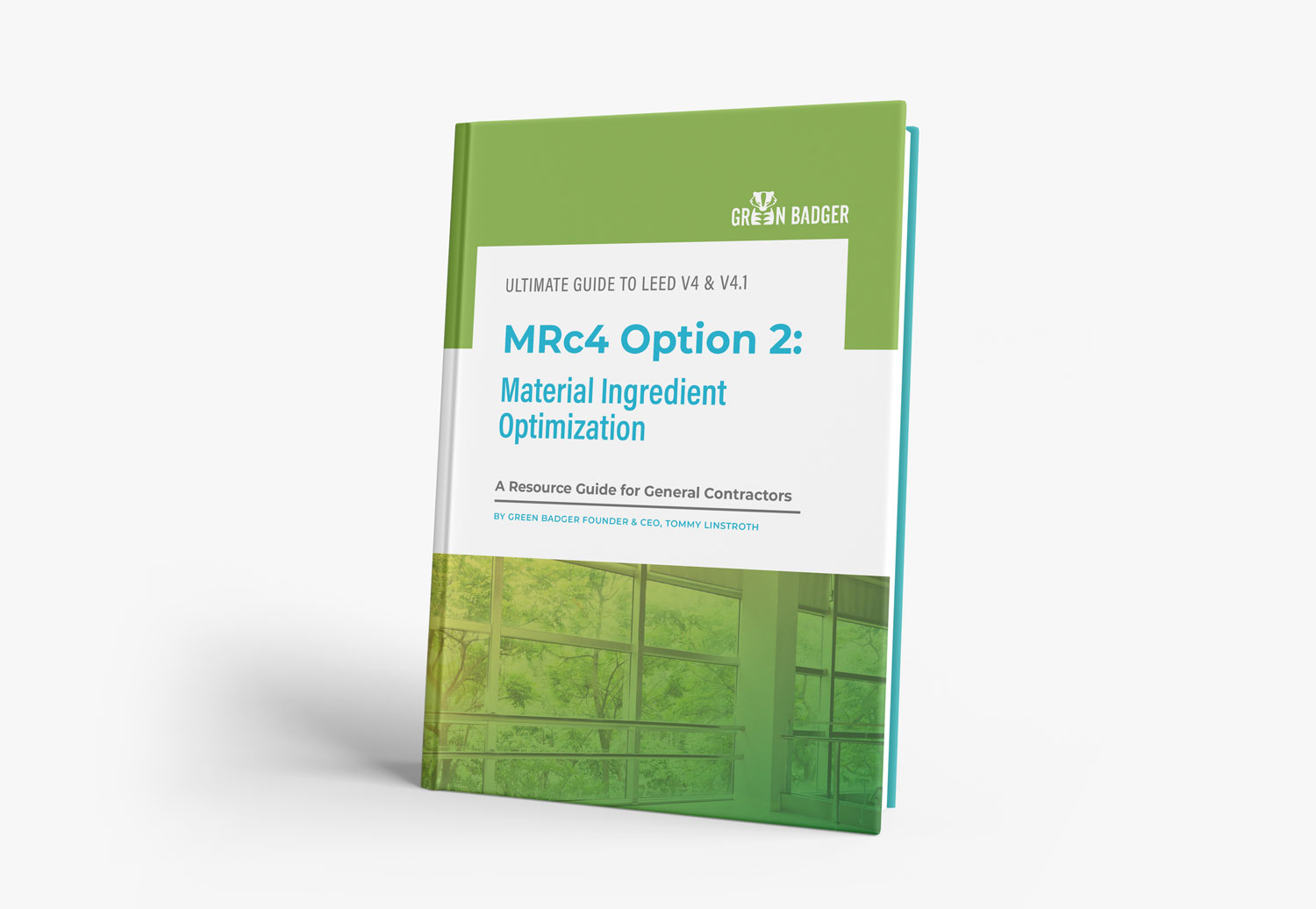
Free Ebook Download
MRc4 Option 2: Material Ingredient Optimization
What is it about Option 2’s that USGBC hates? If they make an Option 2 available, it is always the most complicated, cumbersome, and labor intensive point available. In fact, if you want a good cheat-sheet, if there’s an Option 2 available just run the other way. Option 2 of this credit in LEED v4 wasn’t achievable, so they added an Option 3! Thankfully, all of that is DOA for v4.1. Option 2 remains the same structurally, but the compliance thresholds have dropped significantly, and it puts this credit in the realm of possibly achievable.
Download the MRc4 Option 2 Material Ingredient Optimization Ebook
Download the MRc4 Option 2 Ebook to get all the LEED requirements, strategies, and best practices to achieve Material Ingredient Optimization.


